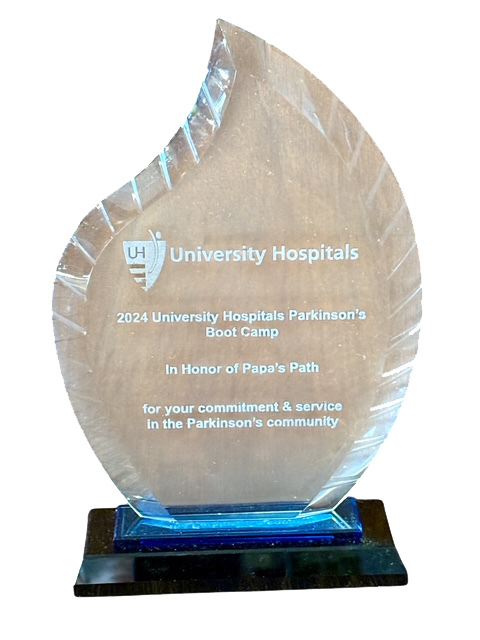Building a Foundation with Fitness
Parkinson’s Disease can present individuals with a variety of physical symptoms. From muscle stiffness and rigidity to gait, posture and balance struggles, PD can pose functional challenges as people move about in their daily lives.
EXERCISE is a tool that can address and improve these symptoms!
The research is remarkable. Advances in neuroscience reveal that exercise may promote brain repair and reorganization. It has actually been shown to strengthen the brain, by reducing inflammation and improving blood flow. Exercise ABSOLUTELY enhances the quality of life for people living with the disease.
With consistency, commitment and the right exercises, everyday functional movements that have deteriorated with PD, can improve and even be restored.
No matter what your fitness level or how many PD symptoms you are faced with, exercise should be a part of your treatment toolbox.
It is never too late to start, you simply need to BEGIN!
WHERE TO BEGIN
-Consult with your doctor to get clearance to begin an exercise program
-Consider joining a PD support group or working with a fitness professional for guidance
-Choose exercises that are appropriate for your personal fitness level
BEGIN WITH THE BASICS
People with PD sometimes find themselves waking early, feeling more symptomatic and anxious since morning medications haven’t kicked in yet.
Establishing a habit of morning movement can address the both the anxiety and the stiffness and rigidity that many individuals face when they wake up.
THE EXERCISES
These are simple exercises than promote blood flow and mobility. They can all be done from a seated position in a chair or even the side of your bed if your feet touch the floor.
If you have trouble sitting up AND/OR standing on your own, be sure to get support from a care partner.
MAKE ALL MOVEMENTS BIG as PD tends to influence movements to become smaller and shorter. (eg. Diminished arm swing & shuffling)
Perform 5-10 repetitions of each exercise
Begin all exercises by sitting tall with shoulders down, engaging your core by pulling your belly button towards your back.
HEAD TURNS
Begin with head facing forward. Gently turn your head to the side and try to look behind you. The goal is to get further with each repetition.
Perform all reps on one side then switch sides.
SHOULDER SHRUGS
Bring both shoulders up toward your ears, trying to graze shoulders to ears.
SHOULDER CIRCLES
Keeping a slight bend in your elbows, slowly rotate shoulders in a circular motion forward for all reps then backward.
HAND STRETCHES
Position hands in front of you with your fingers spread wide, your hands a few inches apart. Curl fingers and roll hands downward from wrists, making a fist, uncurl and return to starting position.
SCAPULAR SQUEEZE
Begin with arms at sides with approximately a 90 degree bend in elbows and palms facing up.Extend arms out to straighten, then pull arms back, squeezing your shoulder blades in towards the spine and elbows are pulled back as far as you can.
TRUNK ROTATION
Begin with hands on thighs. Slowly rotate to the left, placing right hand onto left thigh, extend the left arm straight behind you and let your head follow into the rotation. Repeat on the other side.
MARCH IN PLACE
Begin with feet flat on the floor. Alternate lifting one knee/leg as high as you can and return to starting position.
HEEL TO TOE
Begin with feet flat, raise both heels so you are on your “tip-toes.”
Rock your feet back to flex your toes and lift as high as you can.
LINKS & RESOURCES
MJFF Exercise Information
Expert Voices: Effective, Safe Exercise for People With Parkinson’s Disease
High-intensity Exercise May Reverse Neurodegeneration in Parkinson’s Disease < Yale School of Medicine
Learn about the InMotion Approach™



